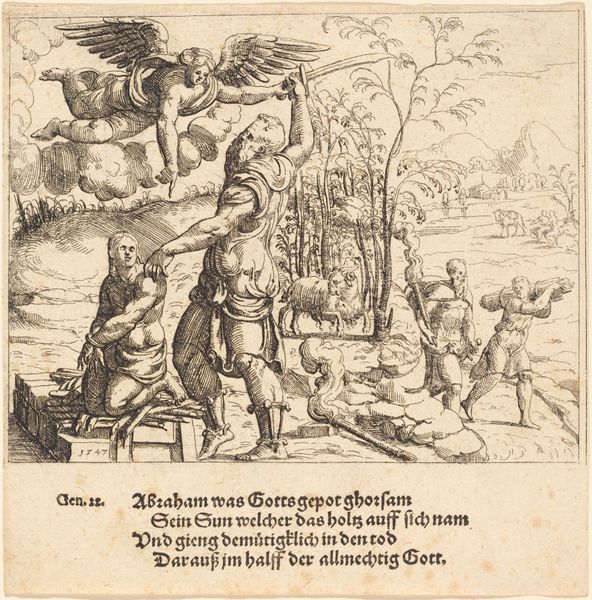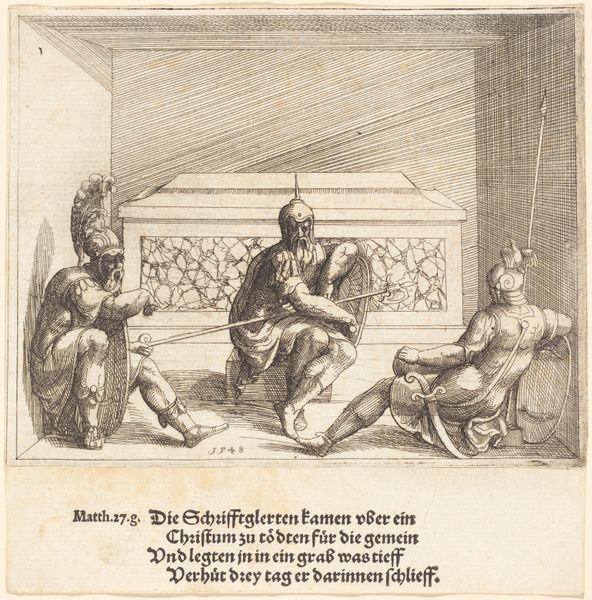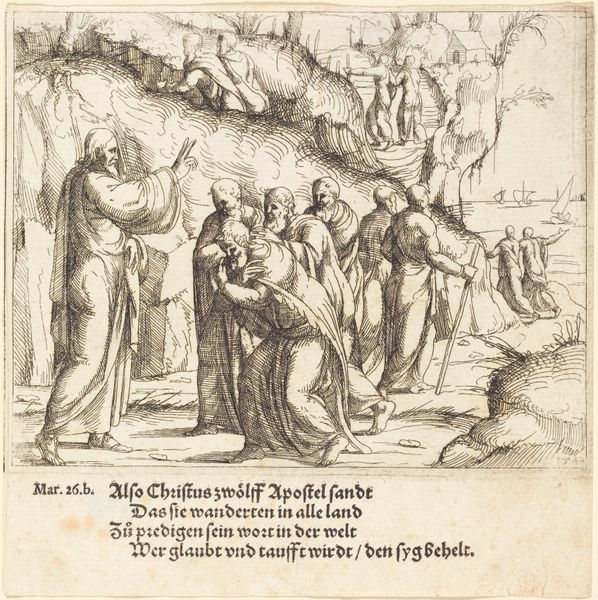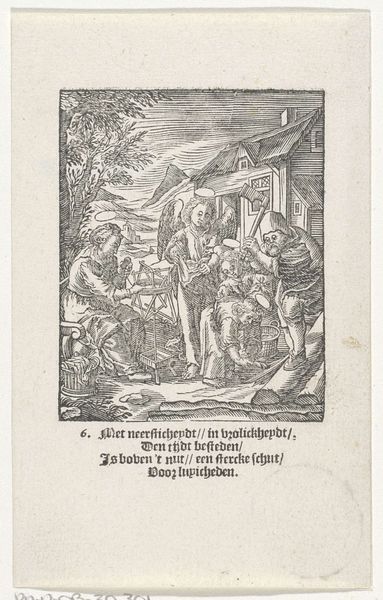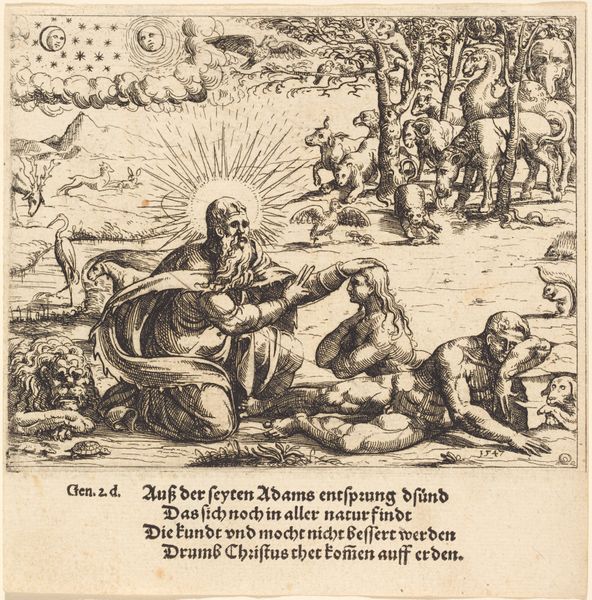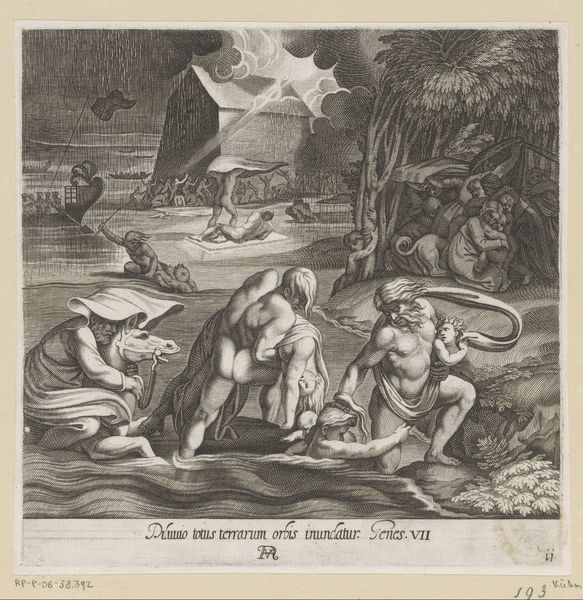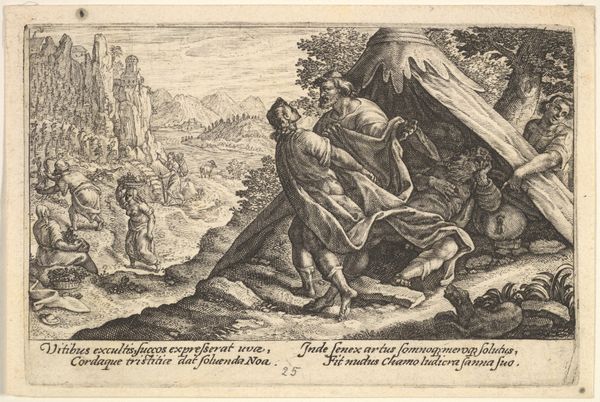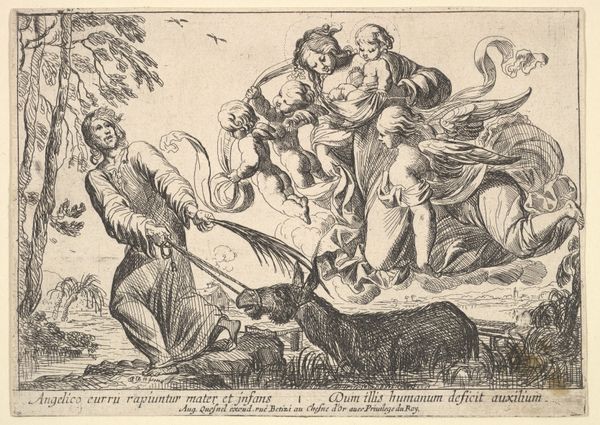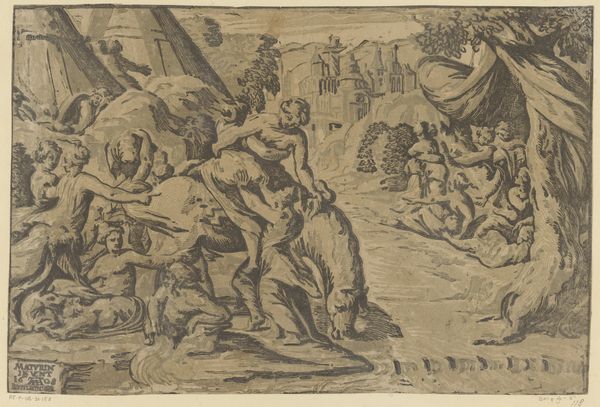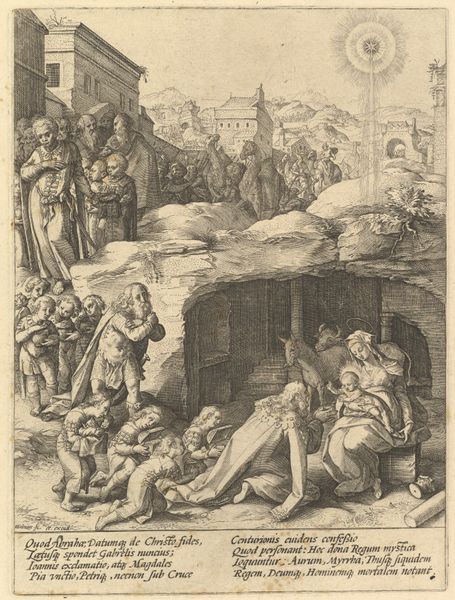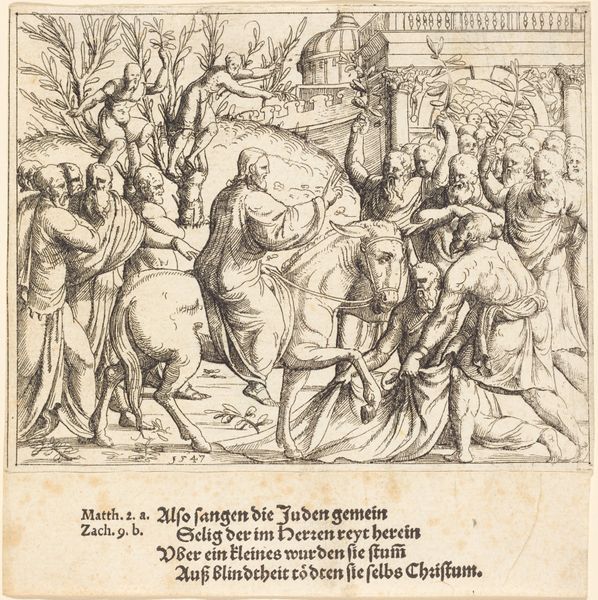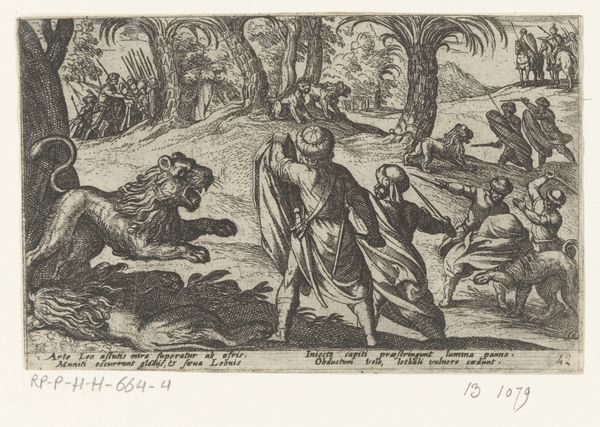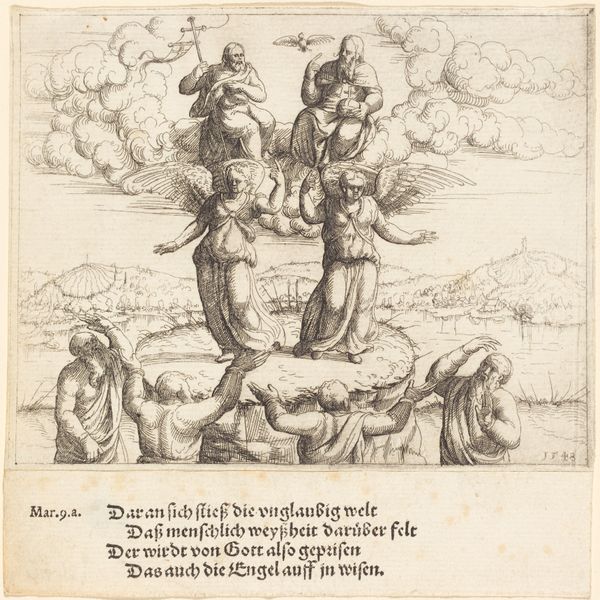
print, etching
# print
#
etching
#
landscape
#
figuration
#
line
#
history-painting
#
northern-renaissance
Copyright: National Gallery of Art: CC0 1.0
"The Agony in the Garden" was made in 1548 by Augustin Hirschvogel using etching, a printmaking technique that democratized image production in its day. Hirschvogel would have covered a metal plate with a waxy, acid-resistant ground, then scratched an image into it with a fine needle. The plate was then immersed in acid, which bit into the exposed lines, creating grooves. The plate is inked, and then wiped clean, leaving ink only in the etched lines. Finally, damp paper is laid on the plate, and run through a press, transferring the image. The resulting print has a distinct character. The delicate, precise lines, teeming with hatching and cross-hatching, create a sense of depth and detail. The relatively easy process of etching, as compared to say engraving, allowed for a wider dissemination of images, spreading artistic ideas among a broader public. This speaks to the social context of the time, where printmaking played a key role in the distribution of knowledge and artistic expression. It’s no accident that the printing press and the Protestant Reformation emerged hand-in-hand.
Comments
No comments
Be the first to comment and join the conversation on the ultimate creative platform.
